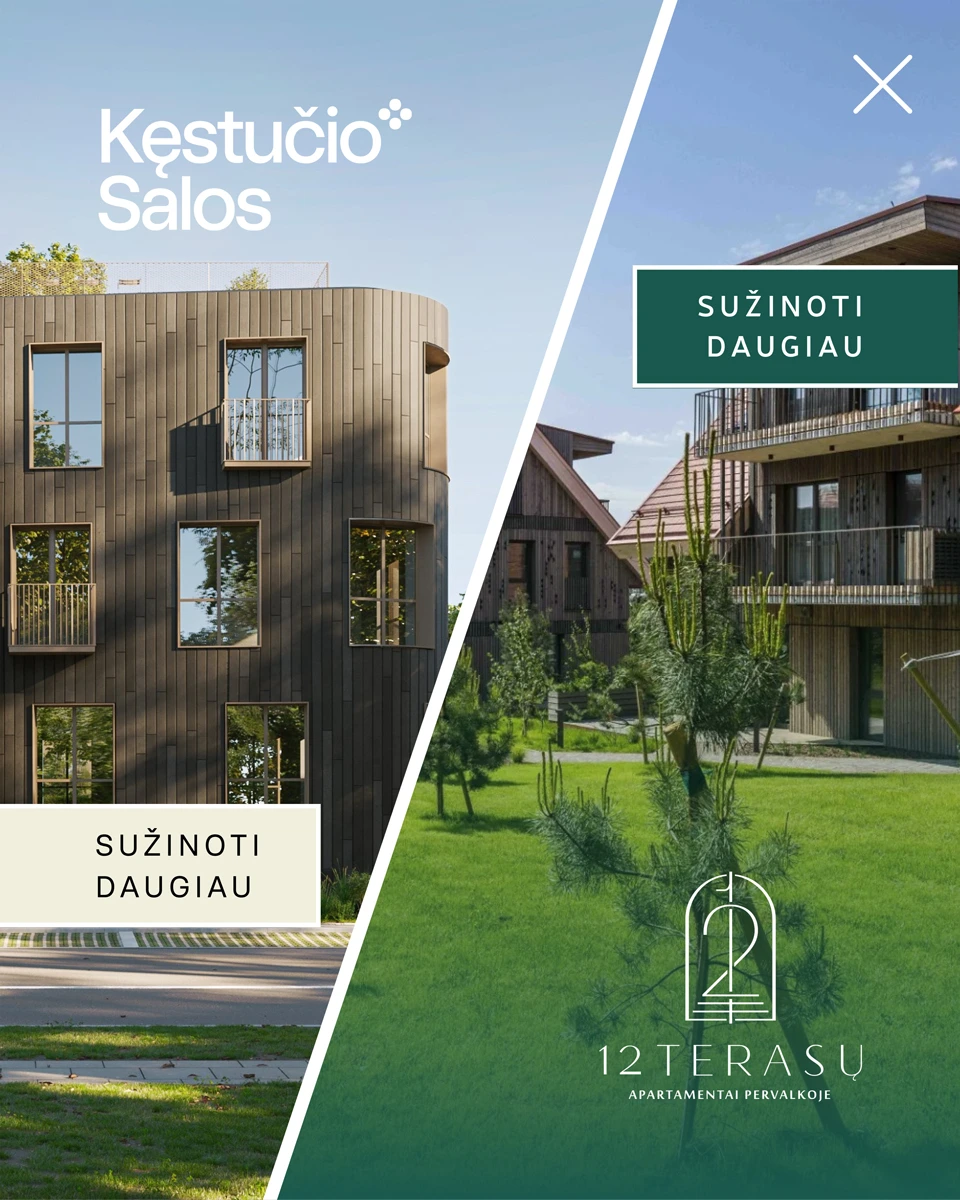Like every summer, Lithuanians not only go on holiday to the Lithuanian seaside but are also very active in looking for property to buy by the seaside. With a wide range of supply and prices, it is possible to take a look at the main trends, where and what to buy, as well as to predict what property prices could rise in the future and whether it could be a good investment.
The most expensive neighbourhood is Birutė Park
As far as the primary market is concerned, new projects, in particular, the most attractive projects are currently concentrated in Palanga, from Birutė Park to J. Basanavičiaus Street, and this is, of course, the most expensive area of Palanga. It has about 10 new projects under development (or in the process of obtaining building permits) at the moment.
When analysing the real estate projects in this location, the main question is the present and the future price. At the moment, it is possible to find objects with partial finishing for sale for €10,000-15,000 per sqm, which means that a 50 sqm dwelling with partial finishing can cost from €500,000 to 750,000. If you include the parking space and furnishing, it could reach a million.
However, such a price does not necessarily represent value for money, make economic sense or represent a good investment, so each property should be assessed on its own merits and property experts should be consulted before making a purchase decision.
It is important to note that, from a buyer’s perspective, the supply of luxury housing does not always meet the buyer’s expectations. A buyer looking to buy luxury property in the Lithuanian seaside area is usually looking for a holiday home.
A buyer in the higher-end or luxury sector is not only looking for a prime location and the highest quality of construction but is also looking for the value-added benefits of the property. For example, the infrastructure in and around the property so that a prospective buyer could have a quality holiday experience not only in the summer but also throughout the year.
It is also certainly relevant whether the project has its spa area, private indoor and outdoor swimming pools, a gym, a concierge, and maybe a private beach club. Underground parking is also important for a buyer in Lithuania, as it is difficult to park a car at the seaside during the summer season.
There are currently only a couple of projects on the seaside which could meet such desires and expectations, both of which are sold out and only individual offers are available on the secondary market.
In my view, the most promising projects on the seafront are the future mixed-use projects that will not only consider the buyer’s need to stay in a scenic apartment but also offer, for example, how to relax on a rainy day in November without having to leave the territory of your home. As people would spend more time in such accommodation outside the summer season, the property would be more actively used and, if they decide to sell, the return on investment would be higher.
The analysis of the current supply shows that there is a growing number of good-quality projects, in good locations, with beautiful pine trees, but without the wider recreational facilities of the project infrastructure.
Apparently, people value the proximity to nature. Whereas previously the trend was to live as close as possible to the centre of Palanga, this is not always the main preference now. Even more so, if it is quality, luxury housing with a well-developed infrastructure.
Housing furnished down to the smallest detail is preferred, but the need for individuality will prevail
The general trend in luxury housing is for the buyer to buy a second home with full finishes. We have had a project where not only was it fully finished, but furniture and household items were also taken care of, even bed linen and expensive tableware were provided. However, buyers fall into two categories in terms of needs – some prefer to take it easy and opt for the developer’s quality full finishes, while others have their tastes and standards would not be justified in this process. There are cases where a buyer refuses a full finish because they have their designers, with whom they have worked for many years and who have helped to furnish many family homes.
Will Palanga rival Southern France, Spain and the UAE?
What are the possible trends in the development of the real estate market on the Lithuanian seaside until 2030? One might predict that if there is a supply of good projects, with developed infrastructure, which is suitable for staying in the Lithuanian seaside all year round, working remotely, and enjoying nature, then more and more Lithuanians with high incomes will buy a home in the Lithuanian seaside.
However, if developers just build apartments in good locations without any additional advantages and prices continue to rise, the Lithuanian seaside will lose its competitive advantage over investments abroad. Lithuanians have been actively showing their interest and buying property in Southern France, Spain and its islands, Italy, Dubai (UAE) and the USA.
Egidija Bružienė
Published on lrt.lt

